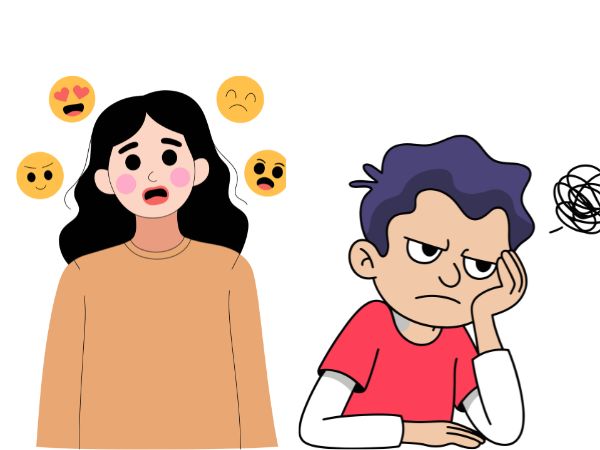Adolescence is often misunderstood.
It’s easy to label it as a phase of rebellion, risk, or restlessness — a time we simply have to “get through.”
But as Dr. Dan Siegel beautifully reminds us, “Adolescence is not a period of madness — it’s a time of courage, creativity, and connection.”
At Pipaltree, we believe that understanding this season of life — rather than fearing it — is one of the most powerful gifts a teacher or parent can offer. The adolescent years are not a storm to be weathered but a transformation to be guided with empathy and wisdom.

🌱 The Brain in Bloom: Remodeling for Growth
During adolescence, the brain undergoes one of the most profound transformations of life. Siegel explains that two essential processes are at play:
Pruning – the brain lets go of unused neural connections, creating space for efficiency and focus.
Myelination – pathways are strengthened, helping information flow faster and decisions become more coordinated.
It’s like a garden being tended — old branches trimmed, roots deepened, and new buds emerging.
But here’s what many forget: this process can feel confusing. The prefrontal cortex, which helps with decision-making and impulse control, is still developing. That’s why adolescents can feel things deeply and act before they think — not because they’re reckless, but because their brains are reorganizing for adulthood.
When we view their behavior through this lens, our role shifts — from controlling to coaching, from judging to guiding.
🌸 The ESSENCE of Adolescence
Dr. Siegel offers a wonderful framework to help us understand this dynamic stage — he calls it the ESSENCE of adolescence. Each letter represents a gift that, when nurtured, helps young people grow into thriving adults.
E – Emotional Spark
Adolescents feel life intensely. Their emotions are vivid and immediate.
Instead of dampening that fire, we can help them notice, name, and navigate their feelings. Encourage reflection through journaling, storytelling, or art. As Siegel writes, “You are not your emotions; you can observe them.”
In class, begin the day with a short “check-in circle” — one word to describe how each student feels. It builds self-awareness and normalizes emotion as part of learning.
S – Social Engagement
The teenage brain craves connection. Friends become essential, and social belonging is everything.
Rather than seeing this as distraction, teachers can harness it through collaborative projects and peer mentoring. Parents can invite their teens’ friends home — creating safe, connected spaces that honor their social world.
N – Novelty Seeking
Adolescents are wired to explore. Their brains seek newness and challenge.
Instead of warning them away from all risks, guide them toward safe risks — new ideas, creative projects, adventure, community service. This drive is not defiance; it’s curiosity in motion.
Siegel reminds us that this openness to novelty is nature’s way of preparing young people to step into the unknown with courage.
C – Creative Exploration
With the right support, adolescents can think outside the box and imagine new possibilities.
In the classroom, ask “What if?” questions. Let them design, build, debate, and dream. Their creativity is not chaos — it’s potential being born.
🌼 For Teachers: Guiding the Growing Mind
Model calm curiosity.
Adolescents mirror our emotional tone. When we respond rather than react, we teach regulation through presence.Create safe spaces for reflection.
Build “time-in” moments — two quiet minutes at the start or end of class for mindfulness or journaling. These strengthen the brain’s integrative fibers, helping students pause before reacting.Celebrate mistakes as learning.
The adolescent brain thrives on exploration. Normalizing failure helps them develop resilience and flexibility.Foster belonging.
Connection is protection. When students feel seen and valued, they learn more deeply and take healthier risks.
🌾 For Parents: Staying Connected Through Change
Be the steady base.
Teens may pull away, but they still need to feel your calm presence. Let home be a harbor, not a courtroom.Listen to understand, not to fix.
When they talk, listen with genuine curiosity. As Siegel says, “Connection is the key to resilience.”Hold boundaries with warmth.
Firmness wrapped in empathy helps adolescents feel both safe and respected.Model integration.
When parents stay balanced — linking emotion with reason — teens learn self-regulation through example.
🌳 The Power of Mindsight
One of Dr. Dan Siegel’s most transformative ideas is “mindsight” — the ability to see the mind within ourselves and others.
When teachers and parents model mindsight — naming feelings, noticing reactions, and staying curious — young people learn to do the same. This builds emotional intelligence, empathy, and mental health from the inside out.
Invite adolescents to reflect:
“What’s happening inside me right now?”
“What does my mind need — calm, connection, or clarity?”
“How can I respond, not just react?”
Over time, these reflections become habits of awareness that anchor them through life’s challenges.
🌻 In the End
Adolescence is not a storm to survive — it’s a symphony of growth, risk, and renewal.
When teachers and parents see this time not as a problem but as potential, we give young people the space to become who they truly are.
As Dr. Dan Siegel beautifully says, “Kindness and compassion are integration made visible.”
At Pipaltree, we believe that every adolescent deserves adults who embody both — firm in guidance, gentle in understanding, and rooted in connection.
Let’s grow with them, not against them. 🌿
Want to transform your school too? Bring the power of new-age teaching & learning.
Contact us to revolutionize your school’s teaching approach today!
In service since: 2010.
